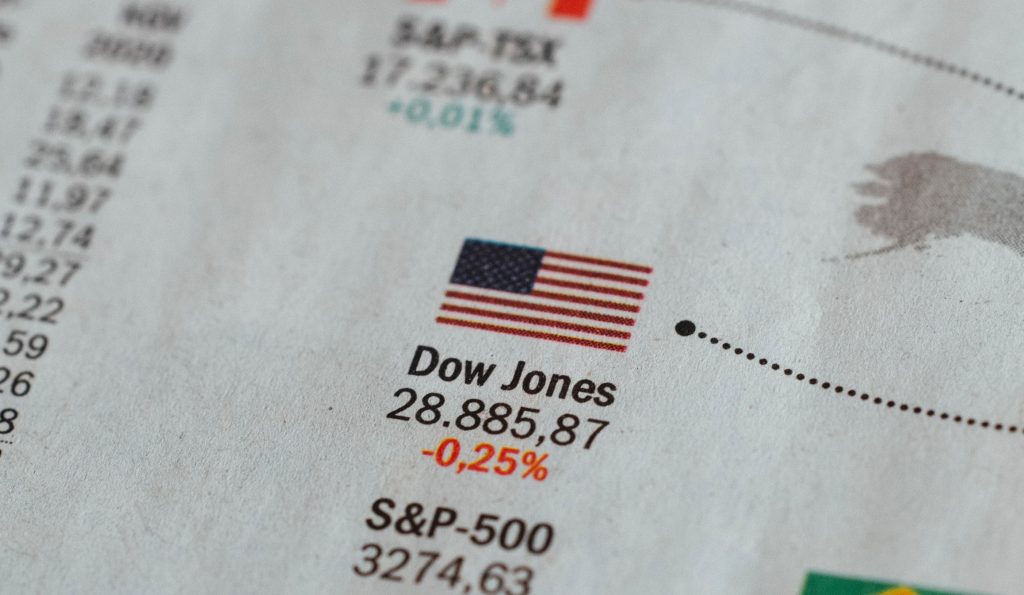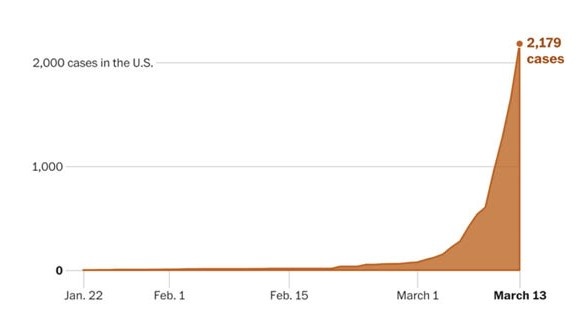Modeling the Pandemic
Efficient market theorists—the economists who believe that every investor is rational and every company’s true value is reflected in the last price paid for a share of stock—will tell you that America’s corporations were worth 12-13 percent less on Monday than they were on Friday. The rest of us recognize that we are in the grip of emotional selling and buying, with no clear end in sight.
The emotional selling on Monday was about as bad as it gets. The Dow Jones Industrial Averages fell 12.94%, which compares with the worst day during the 1929 stock market crash, when the markets fell 12.82%. And this is before the first quarter earnings reports, which will tell all of us just how hard self- quarantines, cancelled meetings, shuttered movie theaters and restaurants, and cancelled flight reservations are hitting (albeit temporarily) corporate bottom lines. Normally, whenever the Fed throws all caution to the wind, lowers its rates to zero and promises to buy assets in order to shore up prices—as it did Monday—markets respond favorably. But we can suspect that some Wall Street traders sensed that the Fed’s action was more of a panic attack than a policy measure, and decided to sell at almost any price.
What’s next? It’s always impossible to predict what the markets will do next. But if you want to understand the current market mayhem, it helps to understand what we’re facing with the coronavirus epidemic. Mathematicians have jumped in to help model our pandemic future.
The Tech Blog written by Peter Diamandis, chairperson of Singularity University, suggests that mortality rates for the virus may be significantly lower than what you’re hearing. Why? Because many patients get mild versions of the Covid-19 virus or may be asymptomatic altogether. In many countries, those people aren’t counted among the reported cases.
In China, which suppressed rather than responded when the virus first hit, the death rate is reported to be 3.9%. But in South Korea, where any citizen can receive drive-through testing, the death rate is reported to be just 0.7%. One might guess that the statistics in Korea are closer to accurate than the numbers reported out of China.
To help model the growth of the disease in the U.S., Diamandis posted this graph, from the Washington Post, noting that the exponential growth of victims can very rapidly include an entire population. If there were 100 infected people carrying the disease today, and the doubling rate was four days (meaning 200 infectious victims four days later, 400 four days after that), then in less than three months, there could be as many as 100 million people infected. If you assume a 1% mortality rate under this worst-case scenario estimate, then 1.1 million Americans would die of the disease. This emphasizes the importance of protecting yourself and your family.
It seemed like there was good news about the virus coming from the Associated Press, which reported that Chinese researchers have shared the coronavirus’s genetic sequence. Forty five volunteers in Seattle are in the process of testing a coronavirus vaccine. The bad news is that this trial is purely to assess the safety of the RNA-based vaccine. Full validation of the vaccine’s effectiveness—which means when you and I will have access to it—is expected to be a year to 18 months away.
Meanwhile, I think we can all look forward to whatever entertaining, not-entirely- rational move we will see in Tuesday’s markets. As you read this, it’s possible you know what we who are writing this only wish we knew: whether Wall Street traders happen to be in a manic or depressive mood following the downturn: whether stocks become more highly discounted and the fire-sale continues, or the sentiment swings back to a buying mentality. Efficient market theorists will tell us that stocks have suddenly become more or less valuable based on the actions of these traders.
Please accept our beset wishes for your health, safety and peace of mind.






